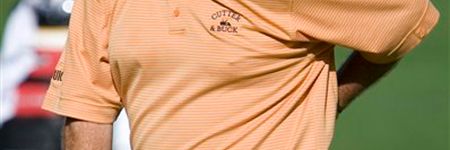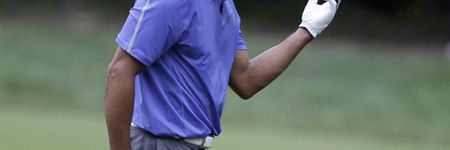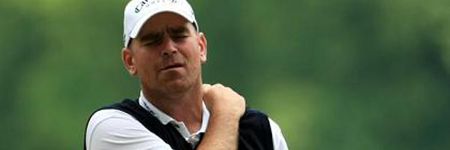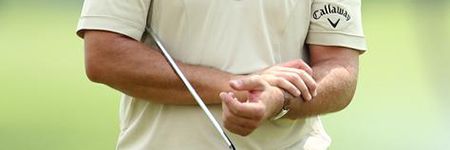|

How They Happen &
What To Do To Avoid Them
By: Chris Cooper, PT, DPT, CSCS, TPI LEVEL 3 CGFI
Injuries can abound from playing golf. Keeping in mind a few things and doing a few others can drastically decrease you chances of experiencing these following ailments:
1. LOWER BACK PAIN:
HOW IT COMES ABOUT: Bending, lifting and twisting are the 3 most common mechanisms of injury in the low back. Each of them done in isolation increase stress on the spine but when you involve more than one, stresses increase significantly. Making a golf swing involves 2 of these- bending and twisting. If you need to get your clubs out of your trunk or you carry your clubs on the course you are continually lifting and bending. Putting your tee in the ground or bending forward to retrieve your ball from the cup involve repetitive bending throughout the course of a round of golf.
WHAT TO DO:
If you are going to golf (or live for that matter) you can’t avoid bending, lifting and twisting, but you can brace yourself by engaging your lower abdominals when you move into those positions and especially when you set up to the ball, move into your backswing, transition back to the ball, and move all the way through impact. Not only will this protect your spine but it will more efficiently transfer energy from your lower body to your trunk to your arms and thus the club head. Another way to diminish lower back stress is to increase the rotational flexibility of your mid-back and your hip sockets. The lower back is sandwiched between these two regions and is considered a stability segment (meant to stay relatively still) while the mid-back and the hips are mobility segments (meant to move). When the mobility segments do not move properly, it forces the lower back to move too
much leading to increased risk of injury.

2. ELBOW PAIN:
HOW IT COMES ABOUT: Lead elbow pain (left in a right-handed golfer) is usually induced by poor swing mechanics most notably the dreaded chicken-winging swing fault post impact. This puts a tremendous amount of force through the outside of the left elbow. Left lateral elbow pain is more common in amateurs. Chicken winging often comes about from the inability to properly transfer weight onto the left leg at impact. So elbow problems in other words, are usually leg problems. Trail elbow pain (right in a right-handed golfer) is usually caused by overuse and repetitive strain scenarios- more common in golf professionals who practice and play a lot.
WHAT TO DO: You want to make sure you balance stretching and strengthening the muscles in both forearms. Using a dowel or PVC pipe attached in its middle to a 3-4 foot length of rope which then attaches to a small weight (start with 2-5 lbs) at the other end. Roll the weight up and then back down first coiling it with the rope on the far side of the dowel and then flipping it over when you get back down so that the rope is coiling onto the dowel closest to you. Stretch forearms with elbows straight and wrist bent backward (fingers/wrist pulled back) and forward (palm down) You should also be working on lower body weight shift sequencing from set-up (50% right/50% left) to the top of the backswing (60% right/40% left) and back to the impact position (60% left/40% right).

3. SHOULDER PAIN:
HOW IT COMES ABOUT: Just like your hips and mid-back, the shoulder joints are meant to be mobile. In fact they have the greatest freedom of movement than any other joint in our bodies. If the shoulders do not get stretched and we do not think about maintaining some amount of non-rounded posture during the day, shoulder injuries will occur.
WHAT TO DO: Stretch your arms overhead, across your body and behind your back from above and below. Focus on a tall spine throughout the day lifting your breastbone slightly upward, dropping your shoulder blades slightly together and downward as well as bringing your head back in line with the rest of your body by slightly tucking your chin. Heck, if you can do that while bent forward in your set up position, you will create a bigger turn and minimize excess stress in your shoulders.

4. WRIST PAIN:
HOW IT COMES ABOUT: Generally wrist pain is a form of tendonitis from overuse due to weakness in the muscles of your forearms and hands. No fewer than 12 tendons cross over the wrist joint allowing for numerous tendonitis options. The hands have to move forward and backward, side to side and in rotation at varying amounts throughout the golf swing motion. All of the muscles attached to those tendons create the dexterity needed to deliver a square club-face at impact. If they are not strong, micro-tearing can occur which then leads to full blown inflammation and pain.
WHAT TO DO: Strengthen your hands and wrists by doing wrist curls in all directions with dumbbells and/or a golf club: bringing back of wrist up and bending wrist with palm up (front/back), moving toward and away from thumb (side-to-side) and palm rotating from up toward sky to down toward floor (rotation). Also consider getting a device or ball for repetitive grip strengthening.

5. ANKLE PAIN:
HOW IT COMES ABOUT: The lead ankle and foot (left for right handed golfer) require a lot of rotary stability in order to keep you from falling over during the finish of your golf swing. Repetitive rotational stresses can lead to pain and a loosening of your ankle ligaments especially if you have had a previous sprain. There is also ankle injury risk that comes with the nature of walking on uneven surfaces, up/down steps/hills, over rocks, etc as well as hanging them off the side of a cart!
WHAT TO DO: Focus on maximizing your ankle flexibility by regularly performing the classic “runner’s stretch” up against a wall with the back leg both bent AND straight. Stand on 1 leg as much as possible during the day. Try standing on one leg while you wash your hands or brush your teeth. If you can do it while rotating back and forth even better.

|

